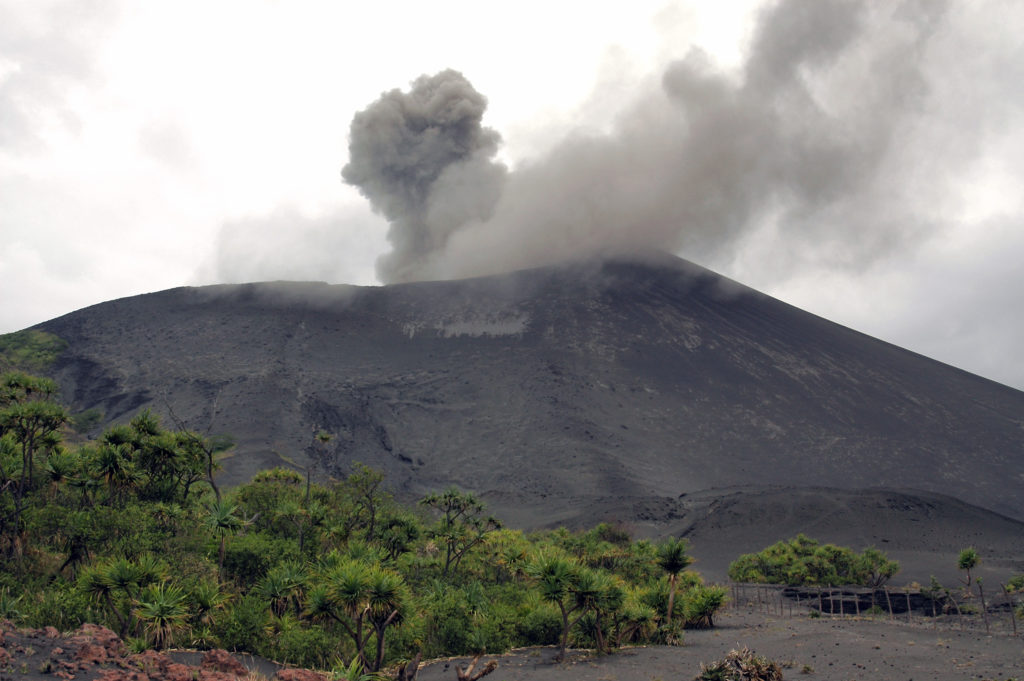Hot Right Now: Erupting & Non-Erupting Volcanoes Mapped
Volcanoes are hot right now — or at least some of them are. We mapped over 400 volcanoes from around the world as well as their eruption statuses. Some volcanoes have been erupting continuously for hundreds of years, a few volcanoes have recently cooled off, and there are those that haven’t exploded for some time now. Each volcano can be classified by type, and while stratovolcanoes are the most common, there are fourteen other types of volcanoes to get heated over. Don’t worry if you can’t name them all just yet. You’ll soon be able to name quite a few, and you’ll successfully identify the specific characteristics of stratovolcanoes, calderas, shield volcanoes, complex volcanoes, and more!
View Volcanoes in a full screen map
Before you have a meltdown from dying to know which volcanoes are hot and which are not, know that you can easily sort the map by eruption status, type of volcano, and even elevation. After you’ve sorted the map, read on as we break down the magma-tudinous facts about some of the hottest — and coolest — volcanoes.
Longest Currently Erupting Volcanoes
The volcanoes classified as erupting have exploded as recently as 2018, and many are continuously erupting to this day. This includes the longest continuously erupting volcano: Mount Yasur, a stratovolcano in Vanuatu. Mount Yasur has been erupting nearly continuously since 1774, and its eruptions can occur up to several times per hour!

While no other volcano can tout such long-standing continuous eruptions like Mount Yasur, there are several volcanoes that have been erupting around the clock since the early 20th century. Volcanoes like Santa María, Dukono, Sangay, Stromboli, Sakurajima, Semeru, and Shiveluch have continued to keep their lava flowing since as early as 1922. In the United States, Kīlauea, a shield volcano located in Hawaii, erupted continuously from January 3rd, 1983 until September 4th, 2018. In 2018 the eruption that began decades ago was officially over.
Where In The World Are They Erupting?
There are 42 currently erupting volcanoes on the map, six of which are located in Indonesia and four are in Ecuador. Japan, Papua New Guinea, and the United States are all home three erupting volcanoes. Much like the highest summits in the U.S., many of the U.S.’s currently erupting volcanoes are located in Alaska. However, unlike the summits, there aren’t 49. Two out of three U.S. volcanoes are located in the Last Frontier: Mount Cleveland and Mount Shishaldin. Costa Rica, Guatemala, Italy, Mexico, Nicaragua, Peru, Russia, and Vanuatu each have to monitor two currently erupting volcanoes, while Antarctica, Colombia, France, India, the Lesser Sunda Islands, the Philippines, and the United Kingdom have one erupting volcano to watch out for.
Interactive Maps Made Easy
Sign Up NowThirty-four of the erupting volcanoes can be classified as stratovolcanoes, while three are complex volcanoes, three are shield volcanoes, one is a pyroclastic cone and one is a cinder cone. The differences between the types of volcanoes are a blast to learn about, so keep reading.
Most Common Types of Volcanoes
Stratovolcanoes
Stratovolcanoes are built up of layers upon layers of lava and ash, and the word “strata” actually means layers. A stratovolcano’s lava typically doesn’t spread very far due to its thickness, so it’s good that they are the most common type of volcano. Two hundred and seventy-five out of the 419 volcanoes on the map are stratovolcanoes.
Calderas
Far less common than stratovolcanoes, calderas are huge and crater-like. They closely resemble a cauldron, which makes sense because in Portuguese, “caldera” means cauldron. You can find 40 caldera volcanoes on the map.
Shield Volcanoes
Pretty much the polar opposite of stratovolcanoes, shield volcanoes have fluid lava that can travel great distances. The liquidly lava also serves to give the shield volcano its flat shape, resembling a warrior’s shield on the ground — hence the name. There are 34 shield volcanoes on the map.
Complex Volcanoes
Last but not least for the most common types of volcanoes are complex — also called compound — volcanoes. Complex volcanoes consist of more than one peak, lake, or cone. There are 16 of these unusual-looking volcanoes on the map.
Other Types of Volcanoes
Other, less common types of volcanoes include volcanic field volcanoes, cinder cones, domes, fissure vents, pyroclastic cones, maar volcanoes, somma volcanoes, tuff ring volcanoes, plug volcanoes, and submarine volcanoes. Altogether, these 10 other types of volcanoes make up just over 12% of the world’s volcanoes.
No Elevation, No Problem: Submarine Volcanoes
Ten volcanoes on the map have negative elevations. You may be wondering how a volcano can erupt below sea level. Believe it or not, there is a specific type of volcano that manages to do just that. All but two of these under-the-sea volcanoes are submarine volcanoes, and while none of the submarine volcanoes on the map are currently erupting, they have successfully shot off steam at some point in their volcanic lives. One thing to note about submarine volcanoes: because they are surrounded by water, the volcano’s magma cools and solidifies quickly, sometimes forming super-cool volcanic glass.
As you can see from the map, there are a lava different types of volcanoes that have different eruption statuses. You can make a map similar to this one of your favorite mountains to hike or even the landmarks specific to your state.
